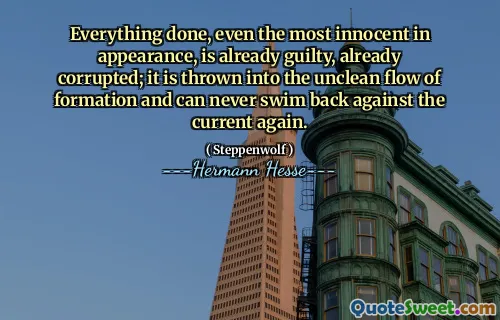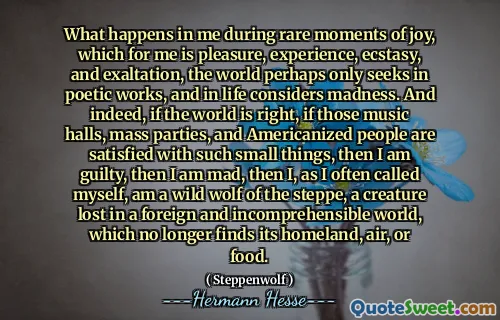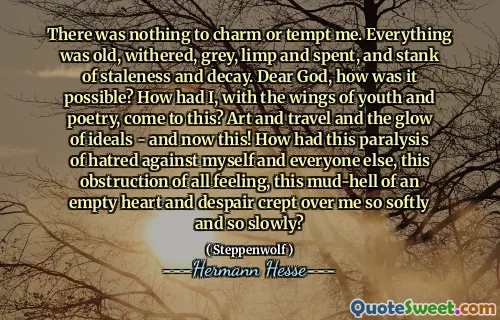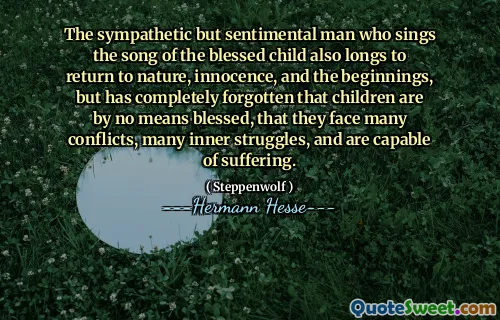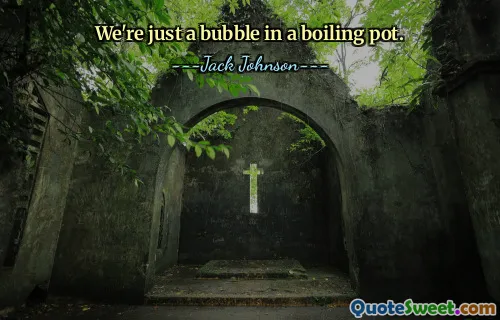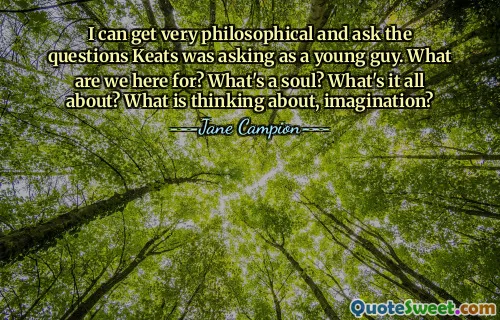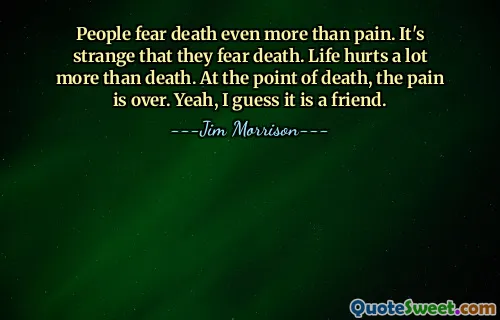
There was nothing to charm or tempt me. Everything was old, withered, grey, limp and spent, and stank of staleness and decay. Dear God, how was it possible? How had I, with the wings of youth and poetry, come to this? Art and travel and the glow of ideals - and now this! How had this paralysis of hatred against myself and everyone else, this obstruction of all feeling, this mud-hell of an empty heart and despair crept over me so softly and so slowly?
This passage captures a profound existential lamentation and the experience of disenchantment with life. The speaker contrasts a past filled with youthful vitality, creativity, and ideals against a present reality marked by decay, emptiness, and emotional paralysis. The imagery of 'wings of youth and poetry' evokes a time when life was full of beauty, aspiration, and the promise of exploration — both physical and spiritual. However, the current state is grimly depicted as stale and decomposed, a reality that not only disappoints but suffocates the very capacity to feel and connect. The phrase 'paralysis of hatred against myself and everyone else' poignantly reveals a deep internal conflict and alienation that fuels despair. It suggests a self-directed bitterness that simultaneously extends outward, creating a barrier to genuine human relations. The slow, gentle creeping of this despair underscores how corrosive and insidious feelings of worthlessness and disconnection can be, slipping into one's soul without dramatic upheaval but with devastating effect. This reflection speaks to the universal human challenge of maintaining hope and meaning in the face of existential crisis and personal disillusionment. It reminds us of the fragility of ideals and the vigilance required to keep the spirit alive despite life's inevitable hardships. The quote beautifully conveys a moment of reckoning with internal darkness—a theme that resonates strongly with Hermann Hesse's exploration of the individual's search for meaning and identity amid modern alienation.
